Join us in our symbolic animal adoption program and adopt today!
Launching in 2024 with Adopt-a-Beaver, our symbolic animal adoption program has been instrumental in raising funds to support BEEC’s conservation efforts and our work on behalf of the natural world. All symbolic adoption donations receive your choice of a custom BEEC patch and an adoption certificate. The minimum donation to receive a patch and certificate is $25, and you may choose from the current year’s animal or from previous year’s. A new animal will be added to this project each year. For donations over $200, you will have an opportunity to meet one of BEEC’s rehabilitated beavers in her natural environment!
Choose your symbolic animal here
2025’s Adopt-a-Salamander Program
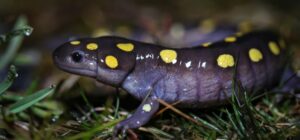
Why spotted salamanders?
Have you heard of vernal pools? If so, it is likely thanks to their charismatic poster child, the spotted salamander. With their surprising size, sporty attire, and charm, these salamanders have drawn attention to the critical importance of the small vernal pool habitats where they lay their eggs. These pools come alive every spring. Spotted salamanders, Jefferson salamanders, and wood frogs migrate from their forest homes to congregate in these big puddles, joining a host of specialized invertebrates that dwell there. These migrations happen on rainy nights in late March and throughout April. They offer a rare chance to see these remarkable salamanders.
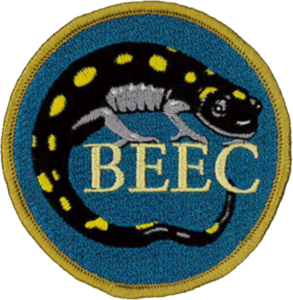
The migrations sometimes include a modern hazard—roads. BEEC’s Salamander Crossing Brigades Program enables salamander crossing guards to assist amphibians at known crossing sites around the region. Adopting a salamander supports BEEC’s work to train amphibian escorts and get them to the places they are needed on migration nights. As roads and traffic levels increase, populations of these amphibians will disappear, unless we help.
Did you know?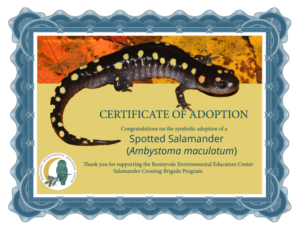
- Spotted salamanders can live for 20 years (one lived to be 32!).
- They spend most of their lives in underground tunnels.
- Although solitary and territorial, they gather in large groups (congresses) on the night they arrive at vernal pools.
- Vernal Pools are also home to tiny clams and shrimp!
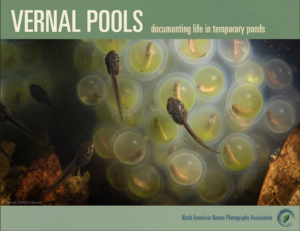
Learn more about life in vernal pools with this photo ebook published by the North American Nature Photography Association, written and photographed by Steven David Johnson, with additional photos by amphibian photographer extraordinaire Dave Huth. Amazing!
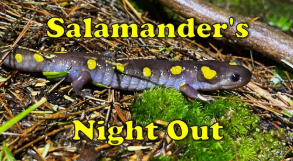
Check out this fascinating vernal pool video created by our very own AmeriCorps member Jill DeVito!
2024’s Adopt-a-Beaver Program
Meet Bebryx, one of BEEC’s ambassador beavers.
Why Beavers?
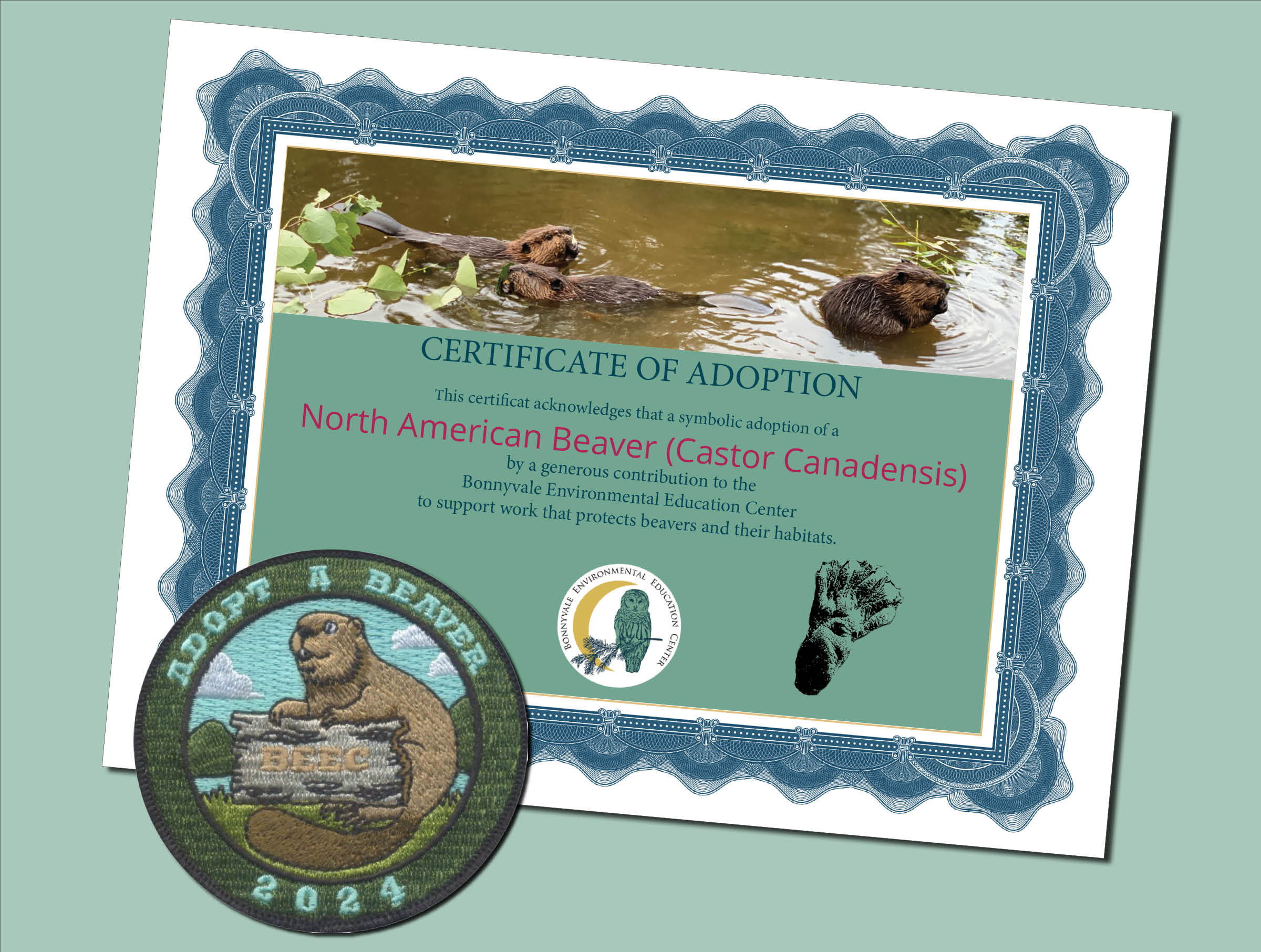
As climate change brings drought, fires, and floods, holding cooling water on the land and slowing its journey to the sea brings many benefits. That’s what beavers do.
Beavers are built for the water, and they can’t live without it. That is why they are so dedicated to building dams to keep it in place. As beavers move upstream and downstream creating new ponds, the areas they leave behind become meadows and shrub lands. These are important ecosystems for many plants and animals, from moose to mink. Beavers are a “keystone” species—essential for other species to thrive. By holding water and trapping silt, beavers and their wetlands are one of our greatest allies in reducing the impacts of climate change and slowing the loss of biodiversity.
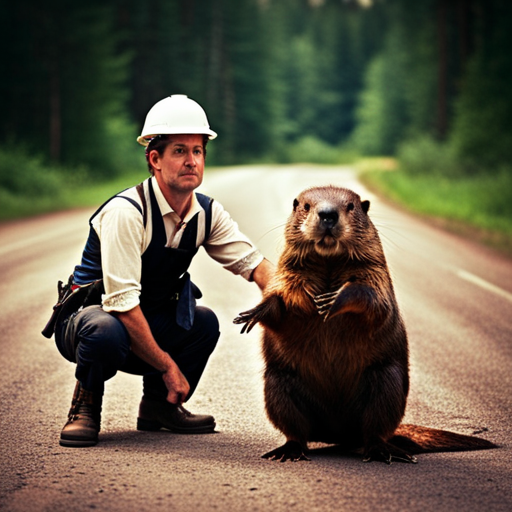 However, when beavers’ plans conflict with peoples’, they can cause a lot of trouble. They clog culverts, cut down favorite trees, and flood fields and cropland. At many sites that are attractive to beavers, they are killed whenever they arrive. These sites become death traps and leave neighboring areas devoid of ponds and wetlands. We need your help – because beavers are so important, BEEC promotes solutions that work for people and beavers.
However, when beavers’ plans conflict with peoples’, they can cause a lot of trouble. They clog culverts, cut down favorite trees, and flood fields and cropland. At many sites that are attractive to beavers, they are killed whenever they arrive. These sites become death traps and leave neighboring areas devoid of ponds and wetlands. We need your help – because beavers are so important, BEEC promotes solutions that work for people and beavers.
BEEC’s role:
Beavers have been a feature of BEEC programming for over fifteen years—that is when BEEC naturalist Patti Smith began studying the beaver colony near her home. Since then:
- Hundreds of people have been introduced to beavers in the field.
- Many college, school, and community groups have enjoyed BEEC presentations on beavers.
- Readers of the Brattleboro Reformer have followed the lives of the beavers in Patti’s monthly column, A View from Heifer Hill.
- BEEC has become a resource for people looking for humane ways to solve beaver conflicts.
- BEEC is working with the towns of Halifax and Westminster to solve beaver conflicts and build support for beavers’ work.
Pumpkin, the orphaned beaver raised by BEEC’s Patti Smith, enjoys one of his first days as a free beaver.
